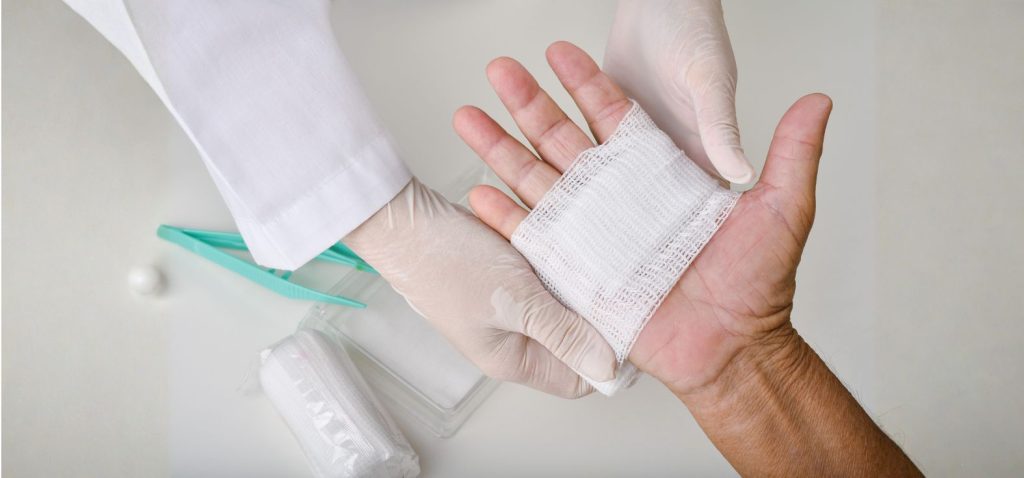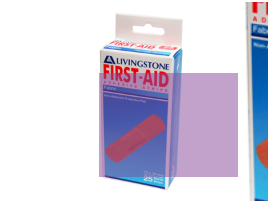Have you ever cut your finger while chopping vegetables or scraped your knee during a walk? In moments like these, how you care for the wound in the first few minutes can make a huge difference. Wound care first aid isn’t just about sticking on a plaster and moving on. Simple mistakes, even small ones, can lead to infections or delayed healing. The good news is, once you know what to avoid, you can care for wounds the right way and help them heal faster.
Let’s take a closer look at some of the most common mistakes people make during wound care, first aid and how you can avoid them.

1. Not Washing Your Hands First:
It might sound basic, but this is one of the most overlooked steps. Many people rush to clean a wound without washing their hands. What happens then? Germs from your hands can easily transfer into the wound, increasing the risk of infection.
Before you touch the wound, take a moment to wash your hands thoroughly with soap and water. If you have access to gloves, even better. Using proper first aid equipment can help keep the area clean and protected from bacteria.
2. Ignoring the Need to Clean the Wound Properly:
Sometimes people think a quick wipe is enough, but proper cleaning is essential. Dirt, dust, or tiny particles can remain inside a cut and cause infection later.
Use clean water or a saline solution to gently rinse the wound. Avoid using harsh chemicals like alcohol or hydrogen peroxide, as these can damage healthy tissue and slow down healing. If something is stuck inside the wound and won’t come out easily, don’t try to dig it out. Seek medical help instead.
3. Using the Wrong Wound Dressing Products
Another common mistake is applying the wrong type of dressing or not using any at all. Some people believe leaving a wound open to “breathe” is best, but in reality, covering it with the right wound dressing products helps keep it moist, clean, and safe from bacteria.
Choose a dressing that fits the size and type of wound. Change it regularly to avoid the build-up of bacteria. Having a small stock of wound dressing products at home is a smart idea, especially for families with children or anyone who’s often outdoors.
4. Applying Too Much Pressure or Touching the Wound Repeatedly
Have you ever found yourself poking at a scab to see if it’s healing? Many people do this without realising it. Constantly touching the wound or pressing too hard while cleaning can reopen it or introduce new germs.
Gently pat the area dry with a clean cloth after washing and apply the dressing carefully. Once covered, avoid fiddling with it. The less you disturb it, the faster it can heal.
5. Forgetting to Replace Dressings Regularly
Changing a wound dressing once and forgetting about it is a big mistake. Dressings need to be replaced regularly to keep the area clean. Leaving an old dressing on for too long can trap bacteria, increase moisture, and lead to infections.
A good rule is to change the dressing at least once a day or whenever it gets wet or dirty. Make sure your first aid equipment includes enough sterile dressings so you’re always prepared.
6. Using Outdated or Improper First Aid Equipment
Many people have a first aid box at home, but when was the last time you checked the expiry dates on your items? Using expired wound dressing products or bandages that have been sitting for years can be risky.
Keep your first aid equipment up to date. Regularly check your kit and replace anything that’s expired or damaged. It’s a simple habit that can save you from trouble later.
7. Ignoring Signs of Infection
Even with good wound care first aid, infections can still happen. But the mistake many people make is ignoring the early signs. If the wound becomes red, swollen, warm, or starts oozing, these are warning signs.
Don’t wait for it to get worse. Seek medical help if you notice these symptoms. Treating an infection early is always easier than dealing with complications later.
8. Not Giving the Wound Time to Heal
We often want wounds to disappear overnight, but healing takes time. A common mistake is removing dressings too soon or returning to normal activities before the wound has fully healed.
Give your body the time it needs. Keep the wound clean, covered, and protected until new skin has formed. This reduces the risk of reopening the wound or leaving a scar.
9. Overusing Creams and Ointments
Many people think applying lots of cream will speed up healing. In reality, too much ointment can block air circulation and keep the wound too wet, slowing down the process.
Use only a thin layer if needed, and choose products designed specifically for wound care. Always read the instructions on the packaging before use.
10. Not Keeping Wound Care Products Ready at Home
When an accident happens, the last thing you want is to scramble around looking for plasters or bandages. Not having the right wound dressing products or first aid equipment on hand often leads to quick, careless fixes.
It’s always wise to keep a basic wound care kit at home and restock it regularly. This way, you can respond quickly and properly whenever a wound happens.
Conclusion
Mistakes during wound care first aid are more common than many people realise. But the good news is that by learning what to avoid and preparing ahead, you can help wounds heal faster and reduce the risk of infection.
If you want reliable wound dressing products and quality first aid equipment, check out Livingstone International. We offer a wide range of trusted supplies to make your wound care simple, safe, and effective. A little preparation today can make a big difference tomorrow.




